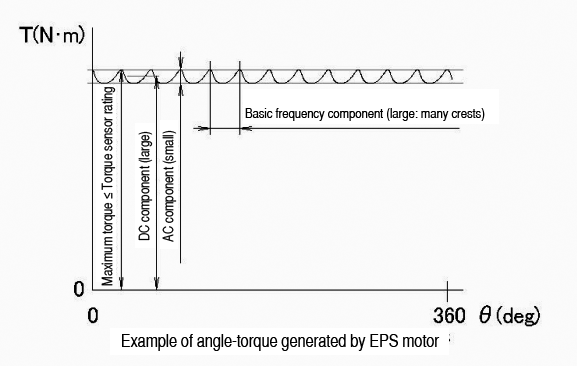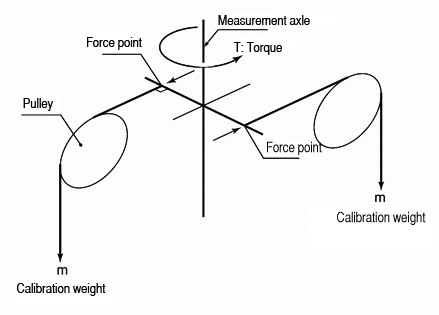ATM-type instruments for measuring angle-torque characteristics
Does the cogging torque measuring instrument also measure bearing torque on the instrument side?
The instrument has a bearing on the drive shaft side of the torque converter, but there's no bearing for the torque sensing shaft that couples to the test motor. This means no bearing torque is detected. The instrument is designed to provide the sensitivity needed for torques below 0.01 mN·m (in the case of the ATM-2MN/5MN).
Are there any instruments that can accurately measure cogging torque, loss torque, and torque ripple for automotive EPS (electronic power steering) motors? Are there instruments that can be used not just for R&D purposes, but for quality checks on product

The ratio of AC and DC components in the torque generated by the motor becomes an issue when the application involves accurate evaluations of the EPS motor cogging torque or torque ripple. (See the diagram.)
The cogging torque and torque ripple (AC component) are extremely small in EPS motors, and we need to select an ATM measurement component with a torque rating suited to the scale of the DC and AC components. Since the maximum torque containing AC and DC components is applied during measurement, the ATM measurement component must have high torque sensitivity and low noise characteristics. Our measuring instruments feature an original torque sensor configuration to achieve high torque sensitivity and low noise without bearings. They provide high measurement accuracy, even for ESP motors with significant basic frequency components.
We evaluate extremely low levels of detent torque and holding torque for micro stepper motors with outer casing diameters of 4 mm. The instrument we currently use requires long setup times for the test motor, and the measurement results aren’t reproducibl
Sugawara's ATM measuring instruments offer high torque sensitivity and low noise without using bearings between the test motor and torque sensor. The simple test motor setup involves suspending the motor directly from the sensor shaft. This provides excellent centering accuracy and fast setup.
Can you describe the method used to calibrate the ATM measurement component?

With vertical torque meters, the measurement axle is vertical; therefore, when calibration involves a weight, we need to convert the vertical weight force to a horizontal force. The ATC3-**MN torque calibration equipment is equipped with a conversion mechanism that lets you suspend the calibration weight on the calibration bar to perform calibrations.